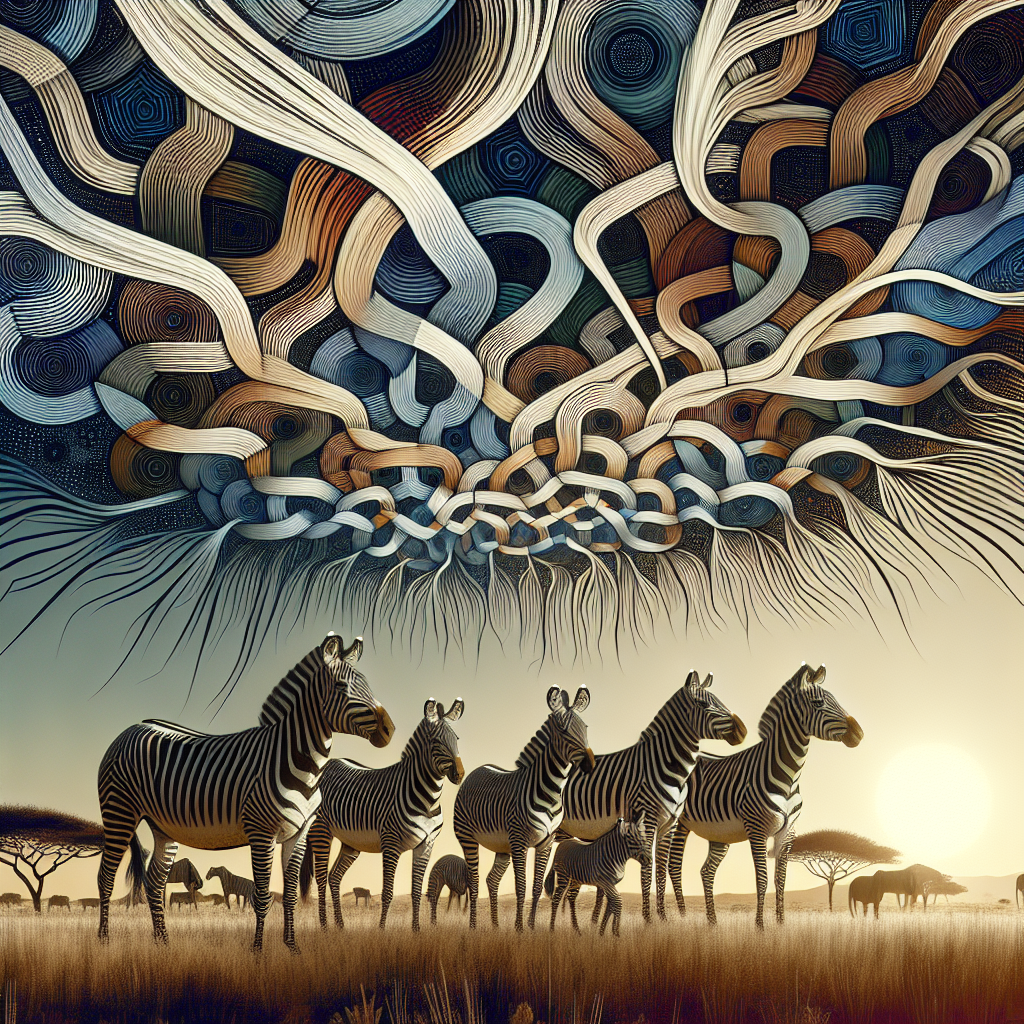The Stripes That Connect: Unraveling the Mysteries of Zebra Patterns

The Stripes That Connect: Unraveling the Mysteries of Zebra Patterns
For centuries, the enigmatic striped patterns of zebras have captivated scientists and laypeople alike, spawning numerous theories and inspiring countless debates. Today, the distinct black and white pattern of the zebra remains one of nature’s most fascinating puzzles. As new research continues to unravel the mysteries behind these stripes, we gain more insight into their purpose and function, cementing the zebra’s stripes as one of evolution’s most intriguing adaptations.
A Natural Masterpiece with Multifunctional Brilliance
The most debated question concerning zebra stripes has been their primary purpose. While early research speculated that the stripes served solely for camouflage, modern science suggests a multifaceted suite of explanations that include temperature regulation, social interaction, and protection against predators and parasites.
Camouflage and Predator Confusion
One of the oldest and most pervasive theories suggests that zebra stripes provide a form of camouflage known as disruptive coloration. In the grassy savannas where zebras roam, their stripes may help break up the outline of a single animal, especially when in a herd, making it difficult for predators such as lions to single out an individual to target. The interplay of sunlight and shade across the savanna may enhance this effect, as some researchers believe the flickering pattern of stripes may confuse predators during a chase.
However, studies using computerized simulations and observations of predator behavior have shown mixed results, indicating that while stripes may offer some level of visual deception, they are not the sole defense mechanism zebras rely upon.
Stripes and Temperature Regulation
Recent research has introduced a novel theory that zebra stripes may play a role in thermoregulation. Some studies suggest that the different absorption rates of the darker and lighter stripes create small-scale air currents that help cool the animal’s body. This would be particularly advantageous in the African heat, where managing body temperature is crucial for survival. Although this theory is gaining traction, it still requires more empirical evidence to be conclusively validated.
Social Interactions and Individual Recognition
In the complex social structure of zebra herds, where bonds between individuals are essential, stripes may facilitate social interactions. Similar to human fingerprints, no two zebras have the same pattern, which could help zebras recognize each other and strengthen social ties within the herd. This is especially crucial for mothers and their calves to maintain close bonds.
Moreover, some studies suggest that patterns may play a role in mating, serving as an indicator of genetic fitness or individual identity. However, the extent to which stripes influence these social and reproductive behaviors is still under study.
Defending Against Parasites
One of the more recent and compelling theories posits that stripes might help deter biting insects such as tsetse flies and horseflies, which are attracted to large, dark surfaces. In controlled experiments, these insects seem less likely to land on surfaces that mimic the striped pattern found on zebras. If biting insects closer to the ground are disinclined to land on a striped pattern, this would provide zebras with a measure of protection from the diseases these pests can carry.
Concluding the Stripe Symphony
The truth about zebra stripes may lie not in a single explanation but rather in the confluence of several adaptive benefits working collectively. Each proposed function of the zebra’s stripes — whether it involves camouflage, cooling, social structuring, or parasite deterrence — highlights the complexity and interconnectedness of evolutionary pressure and natural selection.
As technology progresses and new methods of research develop, the intricate patterns of zebra stripes will continue to invite curiosity and embolden scientific discovery. The mystery of zebra stripes serves not only as a testament to the wonders of the natural world but also as a reminder of the many secrets it still holds, waiting to be uncovered by future generations.